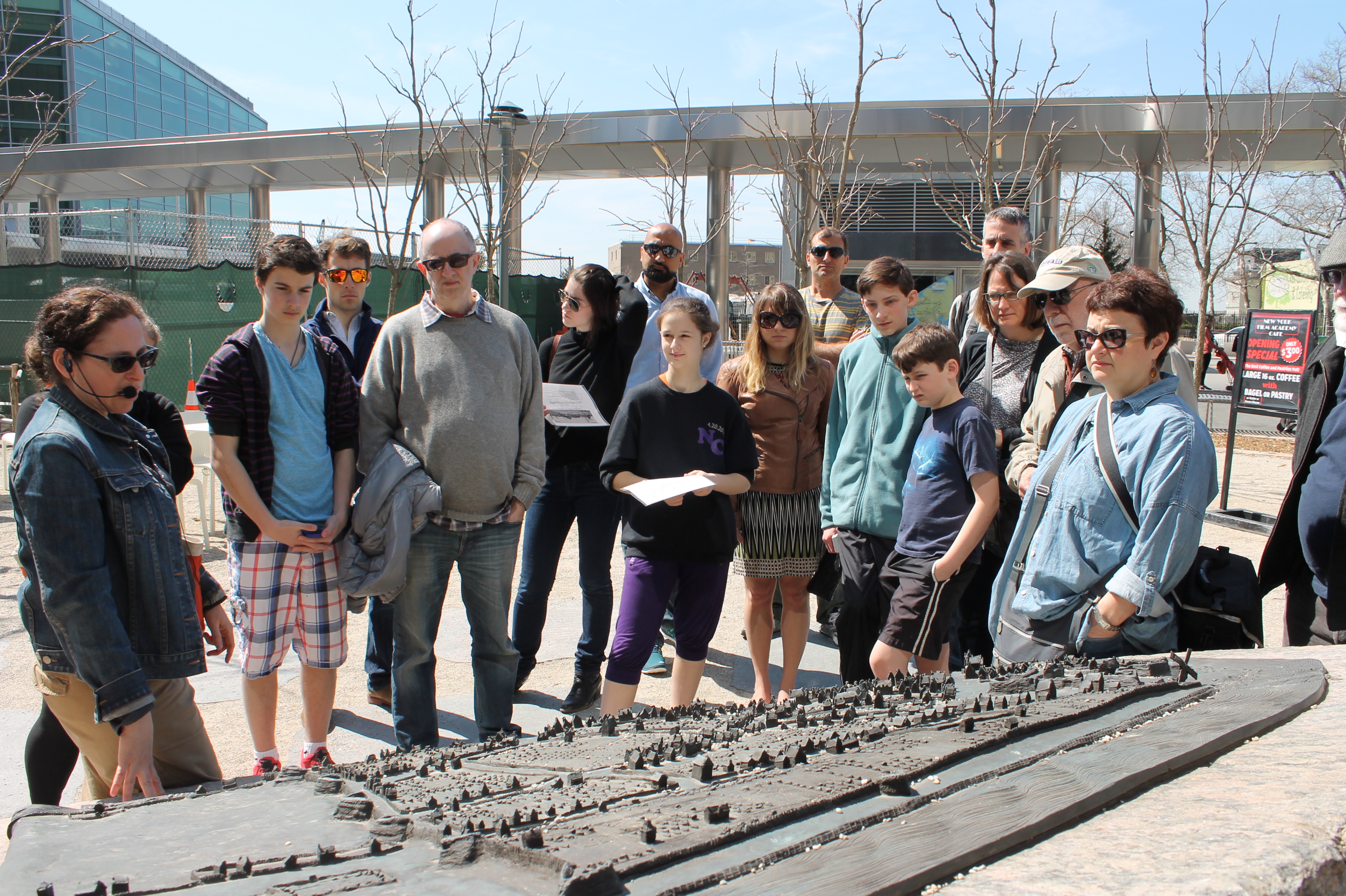by Catherine Teegarden Center for Architecture Foundation
It was perfect walking tour weather as a group of 20 traced the outlines of New York City’s early days as New Amsterdam in the area below Wall Street in Lower Manhattan. The first of the Center for Architecture Foundation’s Reading the Streetscape walking tours this spring, the New Amsterdam tour on 04.12.14 kicked off a series of three walks chronicling how the grew, from its early days as a Dutch company town to today’s modern metropolis.
The tour, led by CFAF Design Educator and architectural historian Jane Cowan, began at Bowling Green, the small park at the foot of Broadway, which dates back to the 1600s when the Dutch West India Company ran New Amsterdam as a trading post specializing in beaver skins to ship to Europe. The park was used at that time for ninepins bowling games, hence the name, and the fence that stands there today pre-dates the Revolutionary War, when the tops of its finials were chopped off to melt down for ammunition.
Although no buildings from the New Amsterdam period remain, the New Amsterdam street grid is intact and designated as a historic landmark by the Landmarks Preservation Commission in 1981. Cowan provided the group with a tangible understanding of New Amsterdam by elaborating on the back story of street names, historic sites, and archeological markers, such as Bowling Green and the old Stadt Huys foundation, which are still visible today. The group also visited Castle Clinton, under water in New Amsterdam days, and Peter Minuit Plaza, where a 3-D model of New Amsterdam and the UNStudio-designed pavilion stand as a gift from the Netherlands to New York in honor of the 400th anniversary of Henry Hudson’s arrival in New York. The tour continued up Broad Street, originally a wide canal, and concluded at Wall Street, the site of the stockade wall that marked the northern border of New Amsterdam, commemorated by wooden panels set into the paving.
CFAF’s Reading the Streetscape walking tours are designed for the general public, and show participants how to “read” buildings for information about the city’s growth and development. The next tour will take place in Greenwich Village on 05.03.14, and will focus on New York City’s development in the 19th and 20th centuries, looking at the townhouses, tenements, and towers that chronicle the many changes this neighborhood experienced as the city’s population moved northward, swallowing up this existing village. The final walk in the three-part series will be in Battery Park City on 06.07.14.
